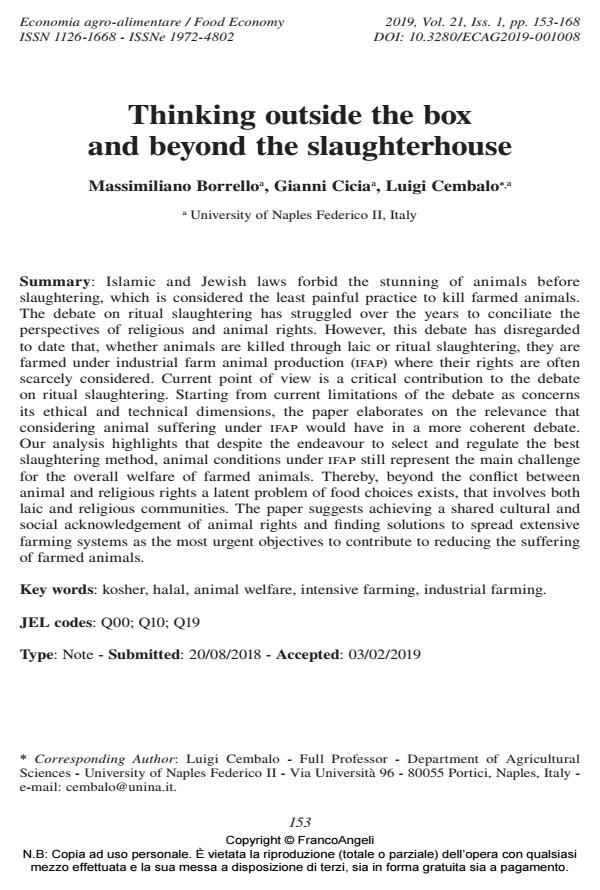Thinking outside the box and beyond the slaughterhouse
Journal title ECONOMIA AGRO-ALIMENTARE
Author/s Massimiliano Borrello, Gianni Cicia, Luigi Cembalo
Publishing Year 2019 Issue 2019/1
Language English Pages 15 P. 153-167 File size 120 KB
DOI 10.3280/ECAG2019-001008
DOI is like a bar code for intellectual property: to have more infomation
click here
Below, you can see the article first page
If you want to buy this article in PDF format, you can do it, following the instructions to buy download credits

FrancoAngeli is member of Publishers International Linking Association, Inc (PILA), a not-for-profit association which run the CrossRef service enabling links to and from online scholarly content.
Islamic and Jewish laws forbid the stunning of animals before slaughtering, which is considered the least painful practice to kill farmed animals. The debate on ritual slaughtering has struggled over the years to conciliate the perspectives of religious and animal rights. However, this debate has disregarded to date that, whether animals are killed through laic or ritual slaughtering, they are farmed under industrial farm animal production (ifap) where their rights are often scarcely considered. Current point of view is a critical contribution to the debate on ritual slaughtering. Starting from current limitations of the debate as concerns its ethical and technical dimensions, the paper elaborates on the relevance that considering animal suffering under ifap would have in a more coherent debate. Our analysis highlights that despite the endeavour to select and regulate the best slaughtering method, animal conditions under ifap still represent the main challenge for the overall welfare of farmed animals. Thereby, beyond the conflict between animal and religious rights a latent problem of food choices exists, that involves both laic and religious communities. The paper suggests achieving a shared cultural and social acknowledgement of animal rights and finding solutions to spread extensive farming systems as the most urgent objectives to contribute to reducing the suffering of farmed animals.
Keywords: kosher, halal, animal welfare, intensive farming, industrial farming.
Jel codes: Q00; Q10; Q19
Massimiliano Borrello, Gianni Cicia, Luigi Cembalo, Thinking outside the box and beyond the slaughterhouse in "ECONOMIA AGRO-ALIMENTARE" 1/2019, pp 153-167, DOI: 10.3280/ECAG2019-001008